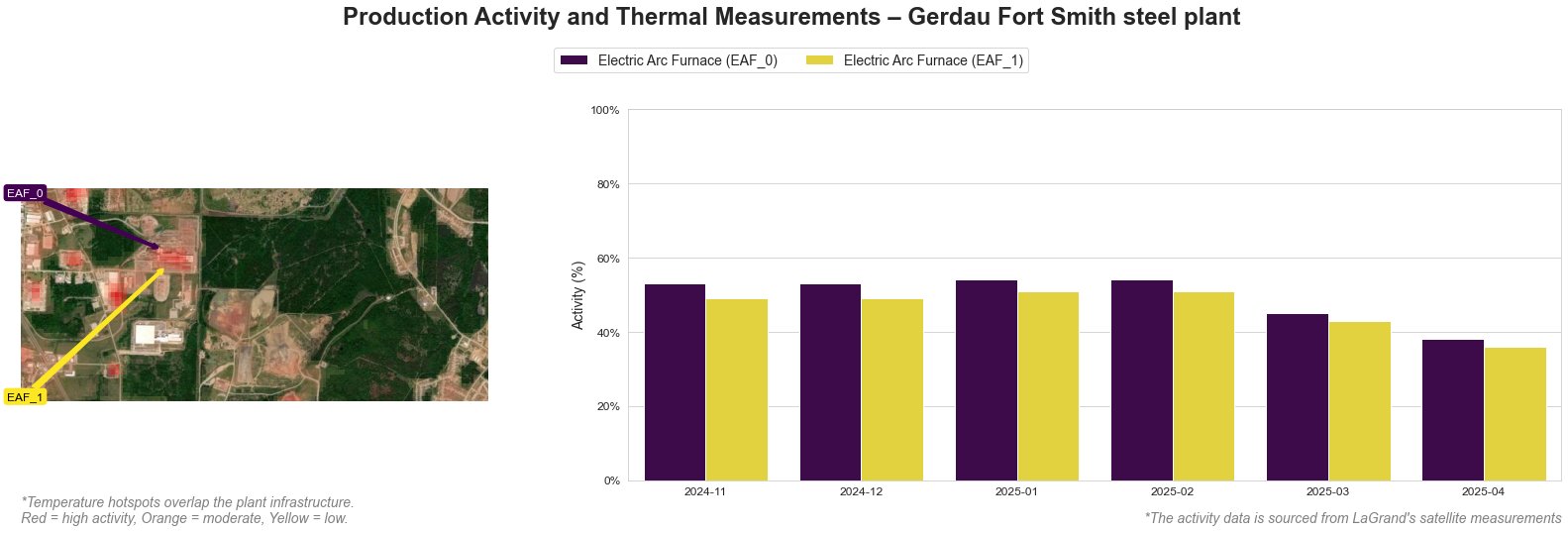
From the Field to the Dashboard – Built by Experts, for Experts.
Discover What's Really Happening in the Steel Industry
Use the AI-powered search engine to analyze production activity, market trends, and news faster than ever before.
Try the Free AI Search EngineProduction Decline at Gerdau Fort Smith Steel Plant Signals Supply Challenges Ahead
Introduction
The Gerdau Fort Smith steel plant, located in Arkansas, United States, is owned by Gerdau and has an annual crude steel production capacity of 550,000 tonnes. This facility primarily produces semi-finished and finished rolled steel for key sectors, including building and infrastructure, steel packaging, and transport.
Activity Trend Overview
Recent satellite observations have indicated a significant decrease in operational activity within the plant’s Electric Arc Furnaces (EAF). Specifically, the thermal activity of both furnaces has shown a consistent downward trend over the observed months, implying potential challenges in meeting market demand.
From November 2024 to April 2025, both EAFs experienced a decline in thermal activity, with activity levels dropping substantially to 38.0% for EAF_0 and 36.0% for EAF_1 by the end of April 2025. This trend, which culminates in an overall activity reduction of -16.41%, raises alarms about the plant’s ability to maintain adequate steel supply amidst rising market demand.
Implications for Buyers and Analysts
The decline in production capacity at the Gerdau Fort Smith steel plant highlights potential supply uncertainties in the North American steel market. Given the ongoing demand noted in the article The US steel industry is heading for imports: demand for flat rolled products is growing, steel buyers may face tighter supply conditions and potential price increases. As Gerdau’s output wanes, buyers are advised to closely monitor the plant’s performance and explore alternative sourcing options to mitigate the risks associated with supply bottlenecks. Market analysts should consider this operational trend as indicative of broader sector challenges, especially in a landscape already experiencing significant fluctuations in production, as reflected in the European market’s recent struggles cited in WV Stahl struggles to foresee German production stabilisation.


